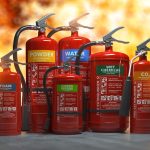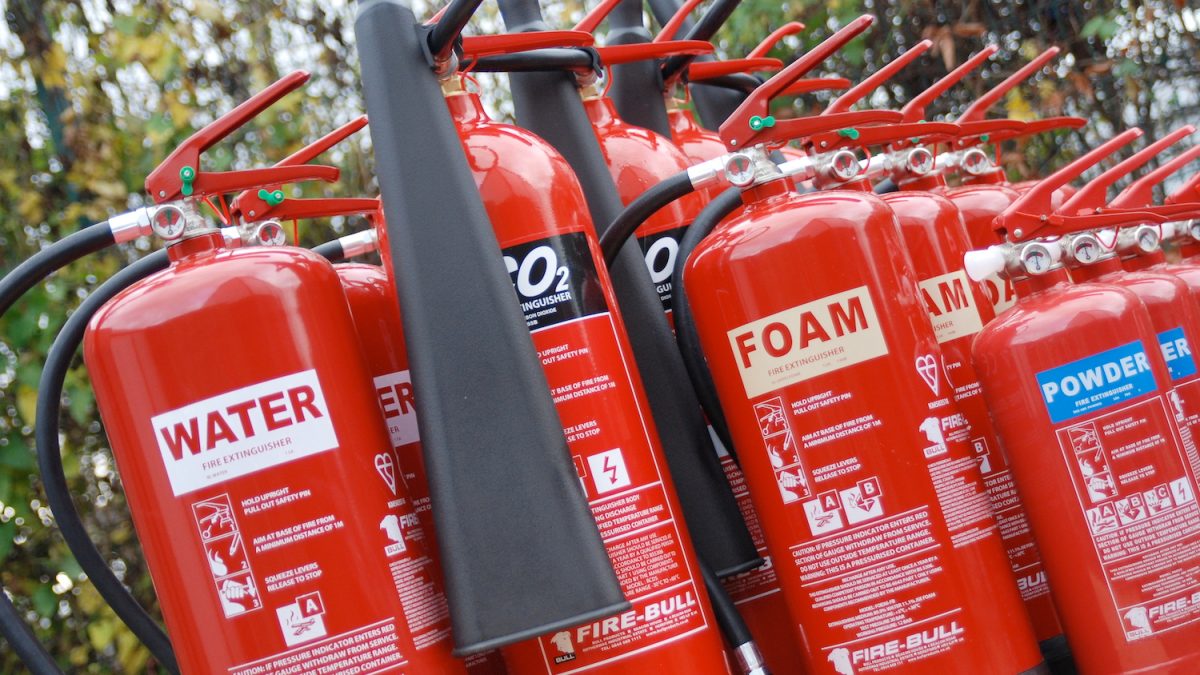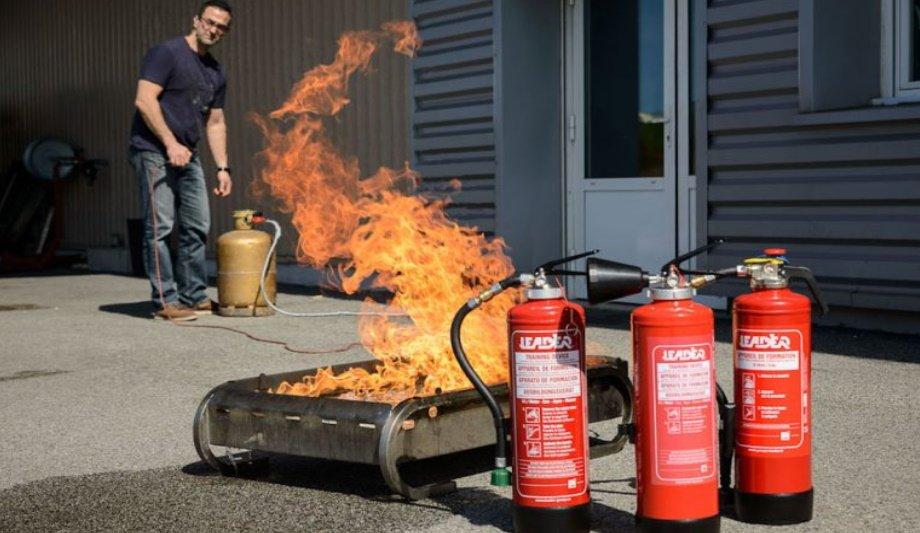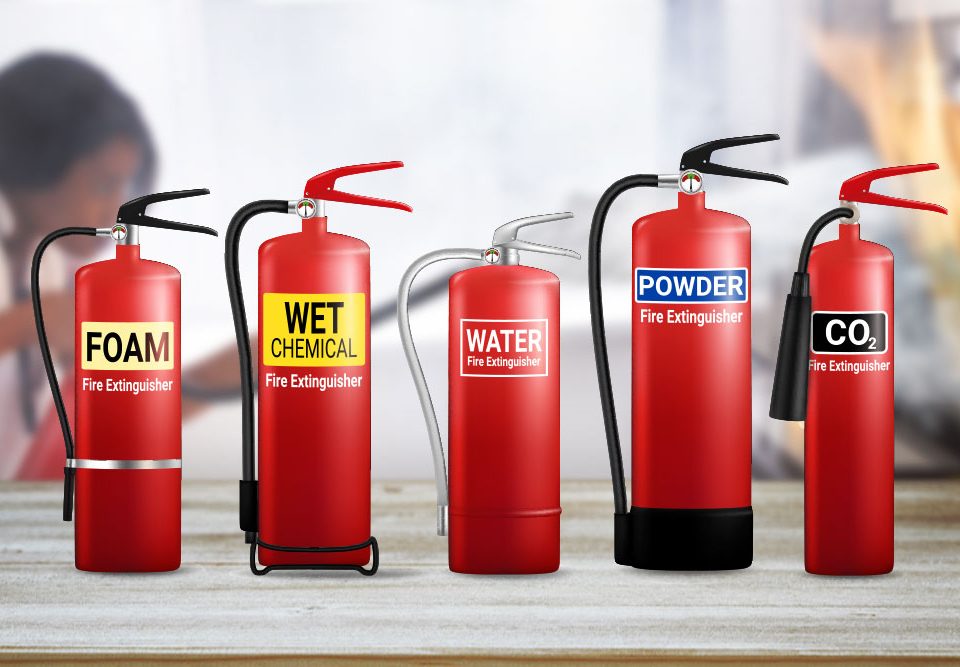
Can You Use an ABC Fire Extinguisher on a Grease Fire?
October 27, 2025
What is the Exact Fire Extinguisher Used in Confined Spaces?
October 31, 2025Fire extinguishers are categorized into different classes based on the type of fire they are designed to combat. Understanding these classes helps in choosing the right extinguisher during emergencies. Class K fire extinguishers are particularly important for commercial kitchens where cooking oils, grease, and fats can cause dangerous fires. Identifying the Class K extinguisher by its color plays a key role in fast and effective fire response.
What Is a Class K Fire Extinguisher?
A Class K fire extinguisher is specially designed to fight fires caused by cooking oils, fats, and grease. These fires often occur in places like commercial kitchens, restaurants, food trucks, and industrial food preparation areas. Unlike other extinguishers, Class K extinguishers use wet chemical agents to safely suppress these high-temperature fires without spreading them.
Deep fryer fires or grease fires are difficult to extinguish with ordinary extinguishers because these fires can flare up quickly and spread. That’s why Class K extinguishers have become a legal safety requirement in commercial kitchens around the world.
What Color Is a Class K Fire Extinguisher?
The common color for the Class K extinguisher cylinder is usually silver or stainless steel, designed to withstand the harsh kitchen environment. In the U.S., the identification label or band on a Class K extinguisher is typically black to distinguish it from other types.
In other parts of the world, like the UK and Europe, the classification system differs slightly. Here, Class F extinguishers, which serve the same function as Class K, often feature a cream-colored label. The body of the extinguisher might be different, but the wet chemical extinguisher’s distinct coloring and labeling help users instantly recognize it.
Why Color Coding Matters
Color coding on fire extinguishers allows for quick and accurate identification during emergency situations. This prevents misuse and ensures safety compliance. Fire safety training programs emphasize recognizing these colors so everyone knows which extinguisher to grab when a particular type of fire occurs.
Imagine a chaotic fire emergency in a commercial kitchen, spotting the correct extinguisher by color can save critical seconds. Using the wrong extinguisher, like a CO2 fire extinguisher or a dry chemical extinguisher on a grease fire, can cause the fire to worsen or even cause explosions.
How Does a Class K Extinguisher Work?
Class K extinguishers use a wet chemical fire extinguisher mechanism. The extinguishing agent is a potassium acetate-based wet chemical solution. When discharged, it reacts with the burning oil through a process called saponification. This chemical reaction converts the burning oil into a foam-like soap layer, which cools the fire and smothers it by cutting off the oxygen supply.
This cooling and smothering effect helps prevent the fire from reigniting, which is crucial with fast-spreading grease fires. Unlike other extinguishers that work by merely cooling or displacing oxygen, the wet chemical agent is specially formulated for kitchen oil fires, making Class K extinguishers the safest choice.
When to Use a Class K Fire Extinguisher
Class K extinguishers are best used on fires involving:
- Deep fryers
- Commercial cookers and griddles
- Grills and broilers
- Cooking oil and fat fires commonly found in restaurant kitchens
Many commercial kitchens and food processing industries are required by law to have Class K extinguishers installed due to the high risk of grease fires. Additionally, it’s essential to review safety protocols before attempting to use any extinguisher. If the fire is too extensive, evacuation and calling professional firefighters remain the safest option.
Difference Between Class K and Class F (UK/Europe)
While both Class K (US) and Class F (Europe/UK) extinguishers target fires involving cooking oils and fats, the regional classification systems create some differences:
- Class K extinguishers use a black band or label and are standard in the United States.
- Class F extinguishers feature a cream label and are common in the UK and much of Europe.
Both use the same wet chemical technology, but their labeling, colors, and certification may vary based on local fire safety regulations.
Other Fire Extinguisher Classes & Their Colors
| Class | Type of Fire | Common Color Label |
| A | Ordinary combustibles | Green |
| B | Flammable liquids | Red |
| C | Electrical fires | Blue |
| D | Combustible metals | Yellow |
| K (US) / F (EU) | Cooking oils/grease | Black (US), Cream (UK/EU) |
Along with knowing Class K extinguisher colors, it helps to understand the uses and colors of other extinguisher types to ensure safety at all times.
Other Fire Safety Tools:
Apart from traditional extinguishers, innovative fire safety tools are available. For instance, the fire extinguisher ball is a self-activating device that bursts upon contact with fire and releases extinguishing powder. It’s easy to install and useful in places like factories or kitchens. The fire ball price in Pakistan is generally affordable, making it a popular choice for added fire safety.
Fire blankets and fire buckets are also effective kitchen fire safety tools. A fire blanket can smother small fires by cutting oxygen supply, while fire buckets filled with sand or water are handy for controlling specific types of fires.
When considering these tools along with traditional extinguishers, always check the current fire extinguisher price and specifications to choose what fits your needs best.
Safety Tips When Using a Class K Extinguisher
To use any fire extinguisher safely and effectively, follow the PASS method:
- Pull the pin to unlock the extinguisher.
- Aim the nozzle at the base of the fire.
- Squeeze the handle to release the extinguishing agent.
- Sweep the nozzle side to side until the fire is out.
Always maintain your extinguisher with regular inspections, and make sure the gas used in fire extinguisher cylinders is properly charged. Knowing which gas is used in fire extinguisher systems helps understand their operation, Class K extinguishers use wet chemical agents, while CO2 fire extinguishers use carbon dioxide gas to smother fires.
If the fire grows or you feel unsafe, prioritize evacuating the area and calling emergency services.
Conclusion
Correctly identifying and understanding the color coding of a Class K fire extinguisher is essential, especially for commercial kitchens. These extinguishers are life-saving in tackling oil and grease fires effectively through their unique wet chemical suppression systems. Combining Class K extinguishers with fire blankets, fire buckets, and fire ball devices increases safety measures.
For reliable fire protection products, including fire extinguisher cylinders, car fire extinguisher options, CO2 fire extinguishers, and the latest fire extinguisher ball price in Pakistan, reach out to Haseen Habib. Expert advice and quality fire safety products can help you protect your business and loved ones.
Stay prepared, be informed, and prioritize fire safety today.




